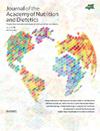六个国家的青少年对体重的看法及其与社交媒体使用的关系:国际食品政策研究的结果。
IF 3.5
2区 医学
Q2 NUTRITION & DIETETICS
Journal of the Academy of Nutrition and Dietetics
Pub Date : 2025-01-01
DOI:10.1016/j.jand.2024.06.223
引用次数: 0
摘要
背景:身体不满意与心理和身体健康状况不佳有关,尤其是在年轻人当中。然而,关于各国对身体尺寸的看法以及与不满意相关因素的数据却很有限:本研究调查了六个国家的年轻人对身体不满意的普遍程度以及与社会人口统计学和社交媒体使用的关系:作为 2019 年和 2020 年国际食品政策研究青年调查的一部分,进行了重复的横断面国家在线调查:样本包括来自澳大利亚、加拿大、智利、墨西哥、英国和美国的 21277 名 10-17 岁青少年。通过尼尔森消费者洞察全球小组及其合作伙伴小组中注册的父母/监护人招募青少年完成在线调查:图画量表评估自我感觉和理想的身体形象,量表之间的差异代表身体不满意度:多项式逻辑回归模型检验了不同国家的身体不满意度差异,以及与社会人口统计学、社交媒体 "屏幕时间 "或使用平台的关联,包括与国家的双向交互作用:总体而言,约 45% 的青少年报告了相同的认知体型和理想体型,35% 的青少年报告了 "比理想体型大"(从加拿大和澳大利亚的 33% 到智利的 42%),20% 的青少年报告了 "比理想体型瘦"(从智利的 15% 到墨西哥的 22%)。社交媒体屏幕时间越长,"比理想体型瘦 "的中度-严重不满意度越高,"比理想体型大 "的至少轻度不满意度越高(p 结论:身体不满意在不同国家的青少年中普遍存在。这些发现凸显了在青少年中,尤其是在社交媒体用户中推广健康身体形象的必要性。本文章由计算机程序翻译,如有差异,请以英文原文为准。
Body Weight Perceptions Among Youth From 6 Countries and Associations With Social Media Use: Findings From the International Food Policy Study
Background
Body dissatisfaction is associated with poor psychological and physical health, particularly among young people. However, limited data exist on body size perceptions across countries and factors associated with dissatisfaction.
Objective
This study examined dissatisfaction prevalence and associations with sociodemographics and social media use among youth in 6 countries.
Design
Repeat cross-sectional national online surveys were conducted as part of the 2019 and 2020 International Food Policy Study Youth Survey.
Participants
The sample included 21 277 youth aged 10 to 17 years from Australia, Canada, Chile, Mexico, the United Kingdom, and the United States. Youth were recruited to complete the online survey through parents/guardians enrolled in the Nielsen Consumer Insights Global Panel and their partners’ panels.
Main outcome measures
Figural drawing scales assessed self-perceived and ideal body images, with differences between scales representing body dissatisfaction.
Statistical analyses performed
Multinomial logistic regression models examined differences in body dissatisfaction by country, and associations with sociodemographics and either social media screen time or platforms used, including 2-way interactions with country.
Results
Overall, approximately 45% of youth reported the same perceived and ideal body sizes, whereas 35% were “larger than ideal” (from 33% in Canada and Australia to 42% in Chile) and 20% were “thinner than ideal” (from 15% in Chile to 22% in Mexico). Greater social media screen time was associated with a higher likelihood of moderate-severe dissatisfaction for being “thinner than ideal” and at least mild dissatisfaction for being “larger than ideal” (P < .003 for all contrasts), with greater dissatisfaction among users of YouTube and Snapchat than nonusers (P ≤ .005 for both contrasts). Modest differences in body dissatisfaction between countries were observed for age, ethnicity, body mass index, and weight-based teasing.
Conclusions
Body dissatisfaction is prevalent among youth across diverse countries. These findings highlight the need to promote healthy body image in youth, particularly among social media users.
求助全文
通过发布文献求助,成功后即可免费获取论文全文。
去求助
来源期刊

Journal of the Academy of Nutrition and Dietetics
NUTRITION & DIETETICS-
CiteScore
7.20
自引率
10.40%
发文量
649
审稿时长
68 days
期刊介绍:
The Journal of the Academy of Nutrition and Dietetics is the premier source for the practice and science of food, nutrition, and dietetics. The monthly, peer-reviewed journal presents original articles prepared by scholars and practitioners and is the most widely read professional publication in the field. The Journal focuses on advancing professional knowledge across the range of research and practice issues such as: nutritional science, medical nutrition therapy, public health nutrition, food science and biotechnology, foodservice systems, leadership and management, and dietetics education.
 求助内容:
求助内容: 应助结果提醒方式:
应助结果提醒方式:


